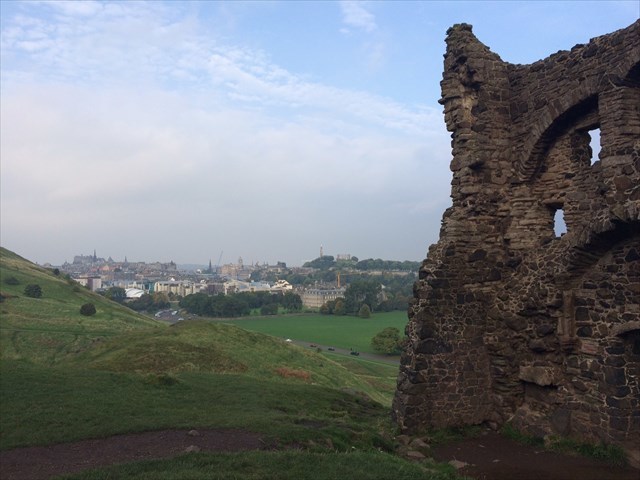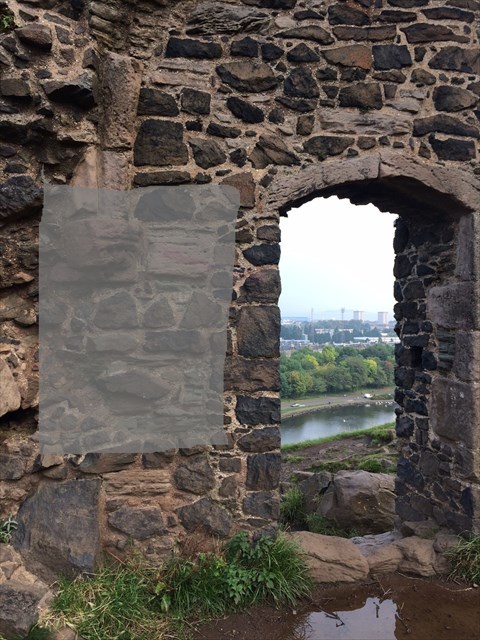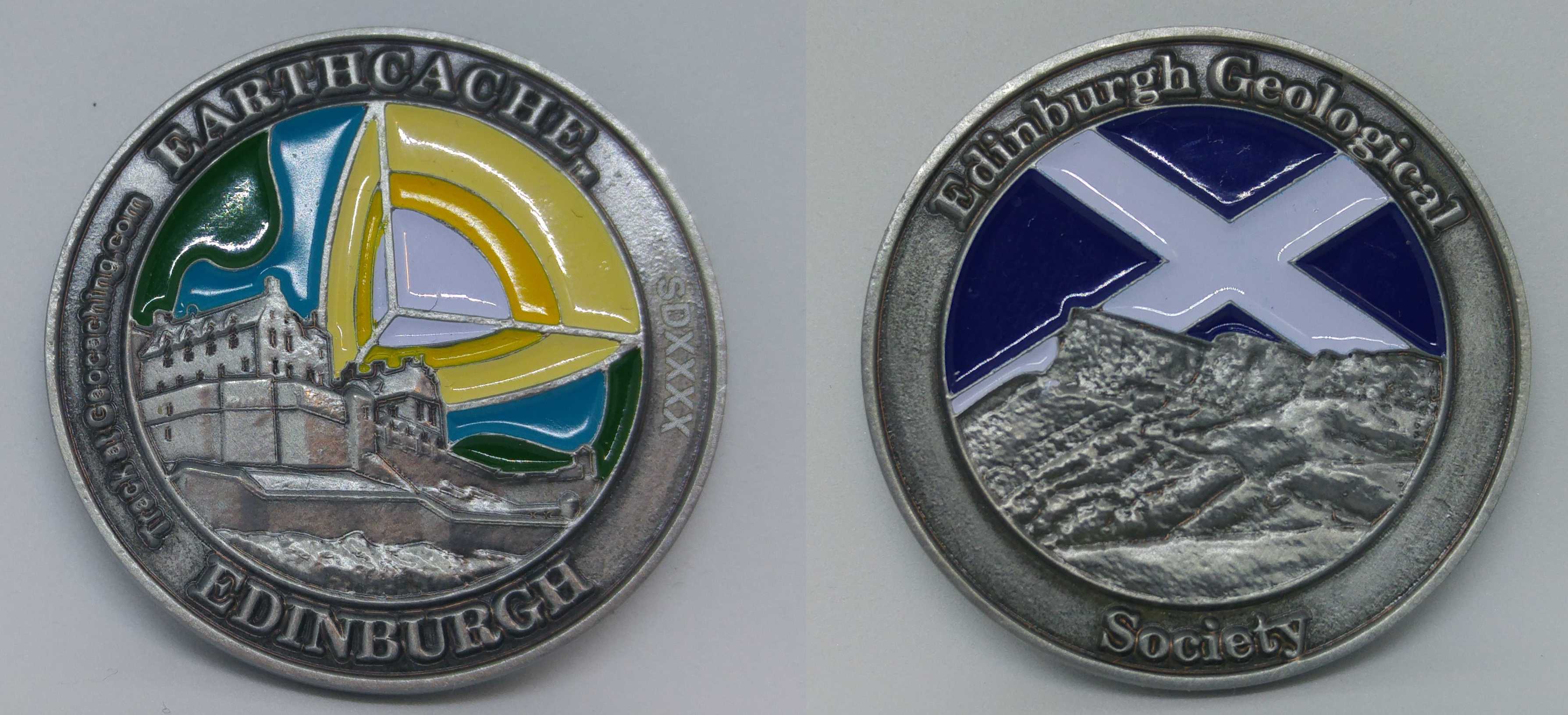
This chapel, with its commanding view of the city, was built using a wide variety of stones. This earthcache considers some that are to the left of the door - the grey area on the photo below.
Igneous rock (derived from the Latin word ignis meaning fire), or magmatic rock, is one of the three main rock types, the others being sedimentary and metamorphic. Igneous rock is formed through the cooling and solidification of magma or lava. Sedimentary rocks are types of rock that are formed by the deposition and subsequent cementation of that material at the Earth's surface and within bodies of water. This area contains both sedimentary and igneous rock, being the base of an extinct volcano that grew up through other sediments.

The area of the chapel wall shown in the image contains different types of rock. They differ in colour, type and grain size. They include:
- Basalt a dark coloured igneous rock composed of small crystals, sometimes found with small holes from gas that was trapped in it as it cooled.
- Sandstone a sedimentary rock laid down by water or wind. The stone can often be coloured red or purple if other minerals are present. Sandstone can have grain sizes from less than 1mm across, up to larger sand grains and visible pebbles
- Tuff a light porous rock, formed from the consolidation of volcanic ash. Locally here it is greenish in colour.
Please examine the area of the wall specified in the image and identify some different rocks, and look at the texture of the mortar holding it together.
To complete this EarthCache, please send the CO answers (via email or the Message Centre), to the following questions. You are then welcome to log the EarthCache. I will contact you if there are any problems with your answers.
- Please match the coloured areas in the photo with the following rocks:

- Basalt
- Fine-grained sandstone
- Coarse-grained sandstone
- Tuff
- What can you identify in the mortar, and do you think it comes from the immediate area?
- The basalt rock has two faces with slightly different colours. What do you think has caused this difference?
- Why do you think such a variety of rocks have been used here?
Thank you to the Ranger and Visitor Services of Historic Scotland for permission to place this EarthCache.

This cache was part of the Edinburgh Earthcache weekend and geocoins are still available here